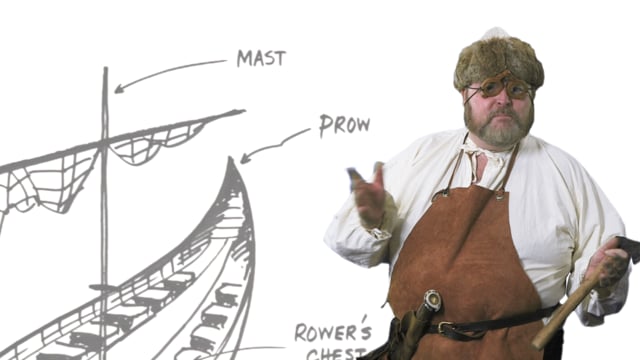This video covers: How the Vikings built their ships; how they made them water tight, what they used to steer the ship and who made the sails.
Inside the hull, which is the watertight body of the ship there are cross beams and ribs to help strengthen the hull. We fill any gaps between the strakes, by stuffing them with tarred wool. It’s a horrible sticky job so I normally use slaves to do this but when you’re on a voyage you have to get your hands dirty. This process is called caulking and is what we do to make the hull of the ship waterproof. Now to steer your ship you can use the sail by using ropes to turn the sail into the wind but you should also have fitted a steering oar at the stern of your ship. The steering oar is a flat bladed piece of wood that sticks out below the hull of the ship into the water and can be turned to help steer the ship. Do you know that it can take the women of our village the best part of a year to make a good sail, they use pieces of wool or linen and sew them together either in straight lines or in a diamond shape.
Eras:
Vikings
Topics:
Explorers
Vikings
Character:
Viking shipbuilder
Key words:
history video, KS2, history clip, Viking, vikings, sails, hull, caulking, steering oar, ship, shipbuilding, strakes, KS2, key stage 2, key stage 2 history, primary, KS2 videos, KS2 clips, KS2 history, KS2 videos, KS2 history film, KS2 history clip, Viking, Vikings, Norse, Norsemen, norse history, Y3, Y4, Y5, Y6, Year 3, Year 4, Year 5, Year 6, viking history,


